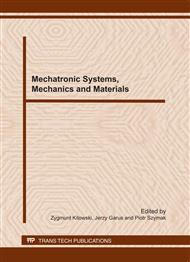p.297
p.303
p.313
p.323
p.331
p.339
p.349
p.355
p.366
The Investigation of Turbine Engine in Aspect of Output Torque Control
Abstract:
In the process of the routine exploitation of naval gas turbine the most important, for the exploiter, is the nature of the cooperation between the engine and its power receiver. In particular, if it is a controllable pitch propeller. Due to the fact that ship's documentation does not often contain that type of characterization, there was an attempt to its designation. Given the preliminary nature of the research, it was decided to perform them on gas turbine engine GTD-350. Appointment of a mathematical model of the above characteristics is a complex issue, requiring the application of the theory of planning experiments. The article demonstrates how to implement the preliminary tests and their results, the results of statistical analysis and substantive research results obtained and formulated on the basis of their conclusions.
Info:
Periodical:
Pages:
339-348
Citation:
Online since:
November 2011
Authors:
Price:
Сopyright:
© 2012 Trans Tech Publications Ltd. All Rights Reserved
Share:
Citation:


